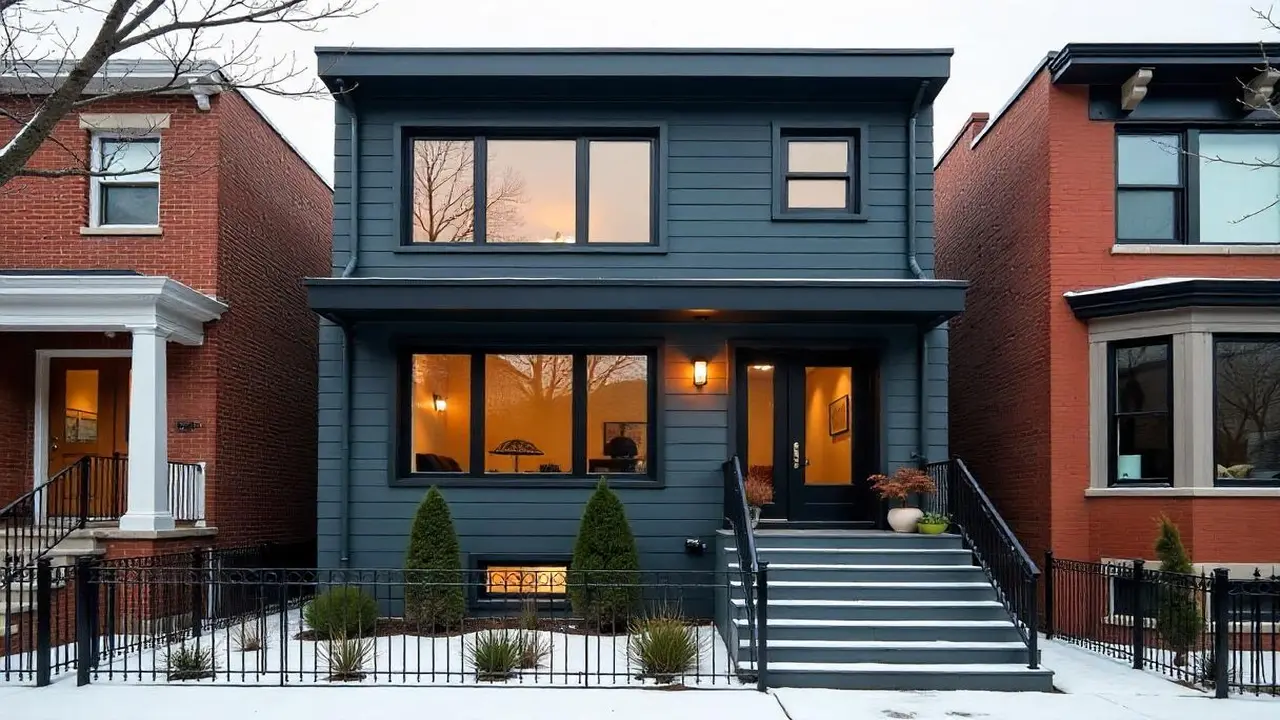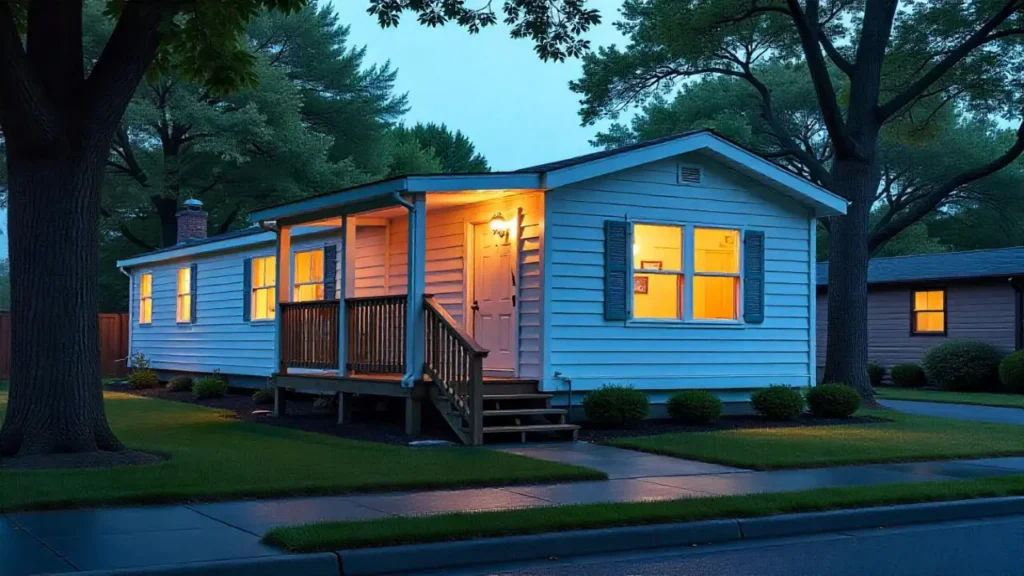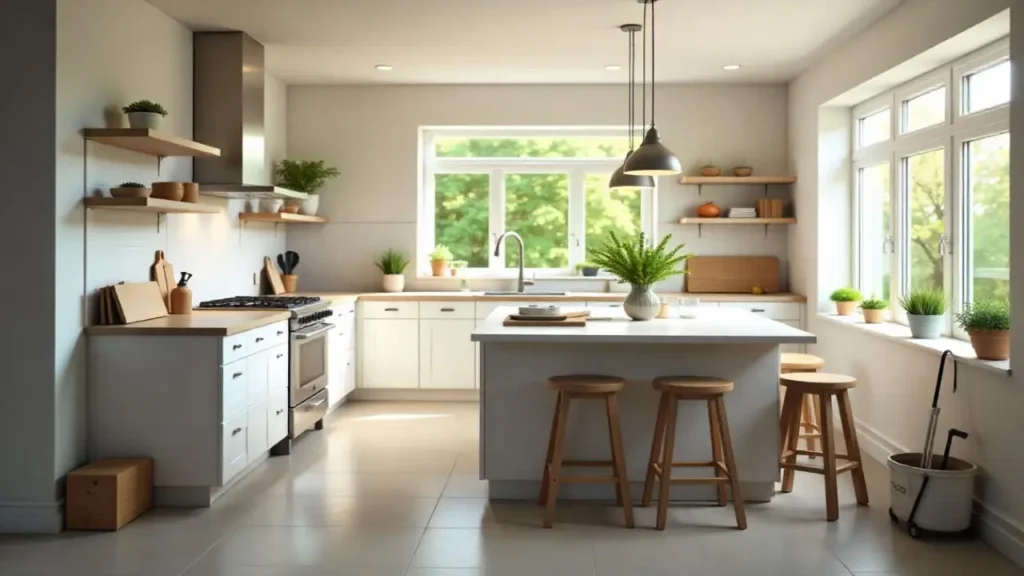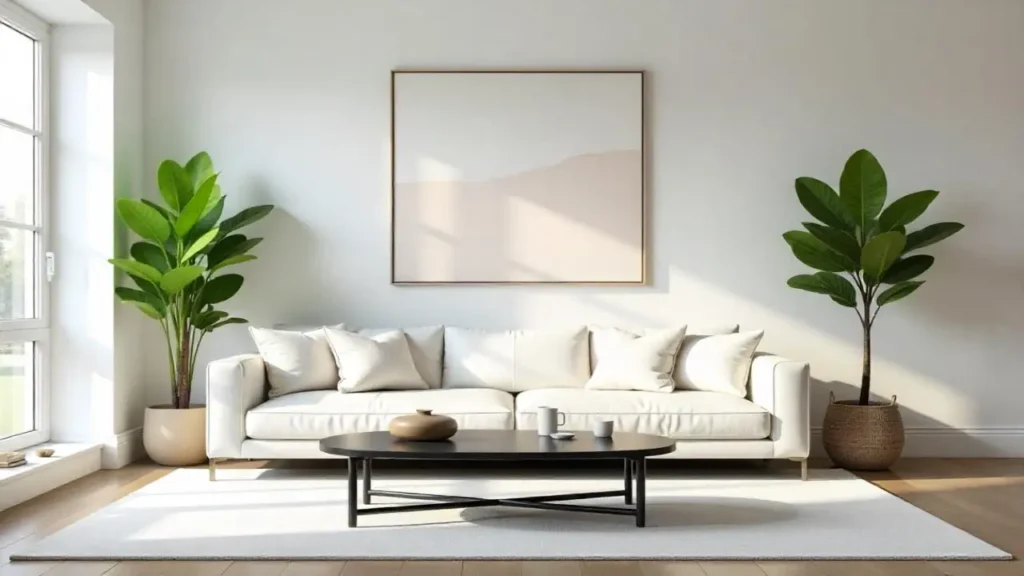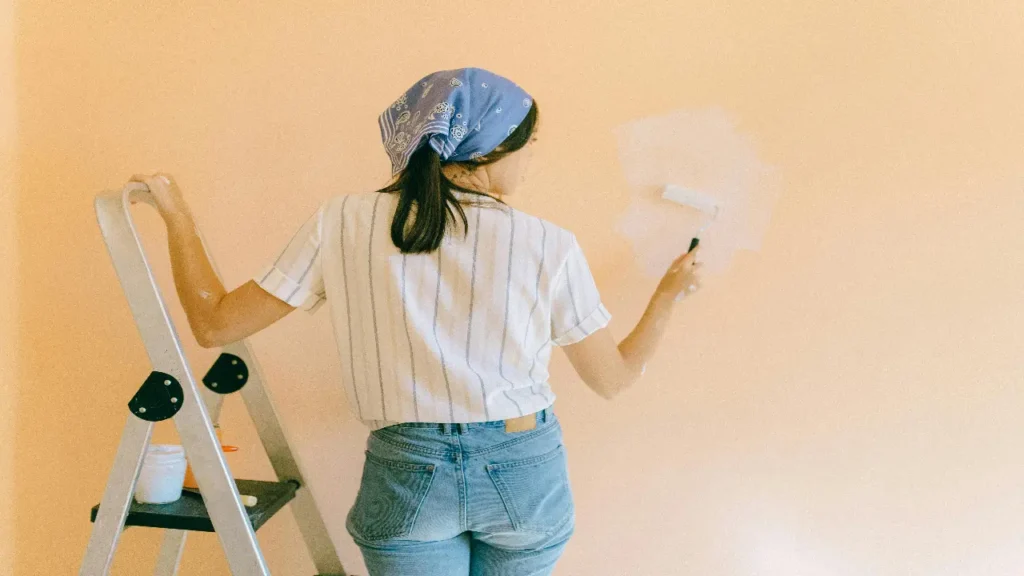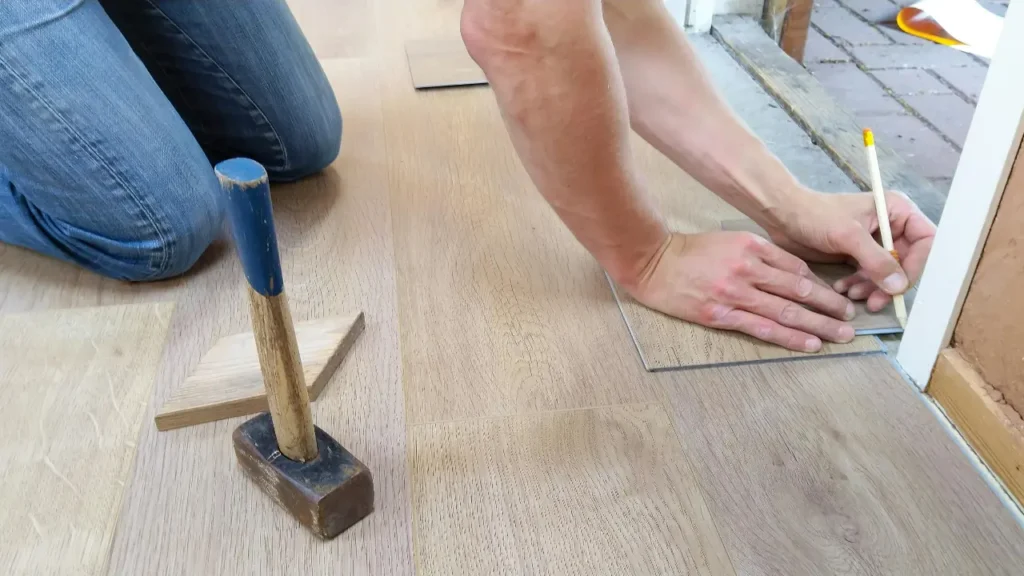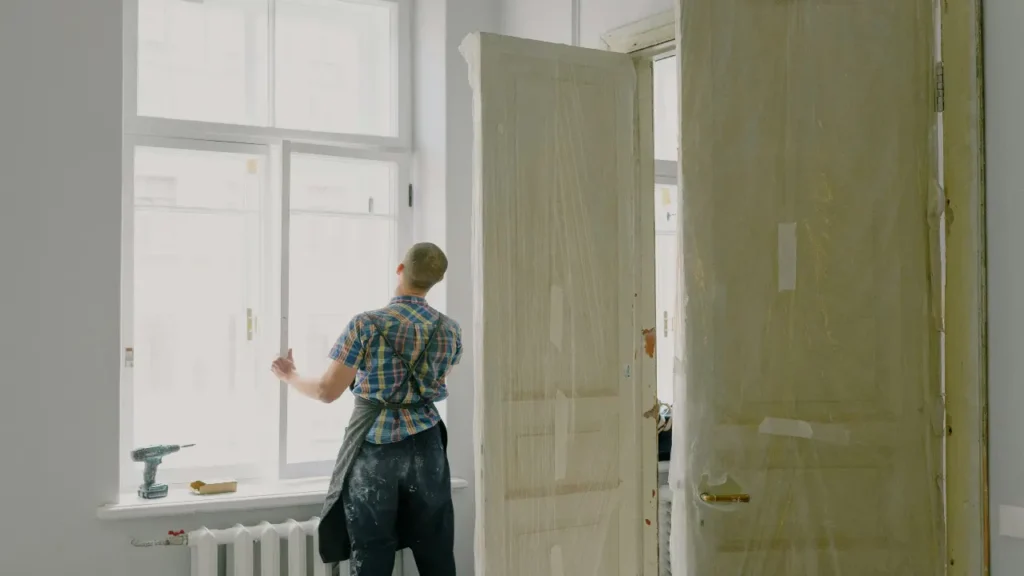A full-home renovation is indeed the best way to breathe a new life into your home without the cost and hassle of new construction.
In fact, from modernizing your space to improving functionality to increasing your property’s value, and more, there’s a lot you can achieve out of full home remodeling.
But let’s admit it: A project of this scale also calls for a significant investment, something you should be prepared to foot.
So, how much does a complete house renovation cost exactly?
Well, there’s no clear answer to this since renovation expenses vary widely depending on factors such as materials, labor, permits, etc.
Nevertheless, I’ve calculated the present-day cost of renovation per square foot on Long Island, NY, based on industry estimates and my own experience as a remodeling contractor. Also, I’ve broken down the cost you’ll likely incur throughout different renovation phases.
So let’s get started.
How much does a complete house renovation cost on average?

First thing first, there’s no one-size-fits-all answer to how much does a complete house renovation cost. On the contrary, the costs can differ significantly based on the complexity of your project and the finishes you choose.
However, to give you a basic idea, the average home renovation cost per square foot on Long Island can be anywhere between $15 to $60.
Meaning if you own a 2,000 square-foot home, you can expect to spend anywhere between $30,000 and $120,000.
But here’s another catch.
You see, while the above estimates are based on contemporary figures from the New York home renovation market, they don’t factor in renovations that include structural changes. Also, they don’t take into account luxury finishes and personalized features that a lot of homeowners go for.
And if your project involves any of these, the cost of renovation per square foot can easily exceed $100. This means you’re looking at an average home renovation expense of $200,000+.
It’s based on a simple logic: If you’re just repairing flooring or repainting walls, you’ll spend on the lower end. But if you’re knocking down walls, installing new plumbing, or upgrading to premium materials, the costs will climb up.
Remodel Your Home from Start to Finish Today!
Get expert renovation services designed to fit your needs and budget on Long Island.

How much does home renovation cost across different phases?
Now that you know how much will renovation cost on average for your entire home, let me break down the cost you’ll foot through different renovation phases.
For starters, a complete home renovation typically involves five phases, namely design, permits, demolition, major upgrades, and final touches. And each of these phases have their own costs.
All in all, here’s how much Long Island home renovations cost across phases:
Phase 1. Design & planning
Before you start off with a home renovation, you’ll need a solid plan and design blueprint. And this is where remodeling companies with architects, designers, and engineers enter the picture.
First off, an architect will charge you in the range of $5,000 and $20,000, which is about 5-15 percent of the total renovation cost.
Then comes an interior designer who will charge anywhere from $75 to $250 per hour or a flat fee of $5,000 to $50,000. Here, the actual design fee will depend on the scope of your project.
Also, if you are someone who struggles to visualize the final outcome, you’ll likely need precise blueprints and 3D renderings from a general contractor on Long Island. And these can cost another $2,000 to $5,000.
Phase 2. Permits
Although permits are not mandatory for minor cosmetic upgrades, you’ll definitely need them for major structural overhauls.
Moreover, Long Island has strict building codes which make pulling the likes of ALT 1 and ALT 2 permits a necessity.
Now, depending on the size of your home, a building permit can cost you between $1,500 and $5,000. Also, if you’re updating electrical or plumbing systems, you’ll need separate permits for these, adding another $500 to $3,000.
Not to mention zoning permits that are required for more extensive changes like demolishing existing walls or adding another story and cost anywhere from $2,000 to $10,000.
Phase 3. Demolition
Having planned your home renovation and secured necessary permits, you’ll now tear down all such walls, windows, doors, stairs, etc., that are no longer needed.
Here, a basic demolition, which includes removing old flooring, fixtures, and non-load-bearing walls, will cost between $3,000 and $10,000.
However, if you’re going for a full gut renovation where you’ll strip everything down, you’re looking at a price tag of $15,000 to $30,000 or more.
Also, for owners of older homes, it is here that you remove hazardous materials like lead and asbestos. And this costs an extra $1,000 to $5,000.
Pro tip
I suggest you repurpose everything you can, including hardwood flooring, cabinets, and fixtures. This will save you money while also reducing demolition waste.
Phase 4. Major upgrades (plumbing, electrical, HVAC, etc.)
Although optional, major overhauls like upgrading electrical and plumbing systems can be a major investment.
But how expensive is it exactly?
Well, rewiring your home with new electrical lines can cost anywhere from $5,000 to $15,000.
At the same time, the cost of re-plumbing the entire area can be in the range of $4,000 and $20,000.
Similarly, HVAC upgrades are another expense that come at a price tag between $3,500 and $7,500. And if you’re installing new ductwork or air conditioning, the costs will start from $5,000 and go upward of $15,000.
Phase 5. Finishes
The last phase in a typical home renovation on Long Island, you’ll be applying finishing touches.
Here, entry-level finishes, such as stock cabinets, laminate countertops, vinyl flooring, etc., will cost between $15 and $100 per square foot.
Similarly, a mid-range renovation is between $100 and $200 per square foot and includes semi-custom cabinets, quartz countertops, hardwood flooring, designer tile, and premium fixtures.
Lastly, If you’re looking for a luxury renovation, you’re stepping into the $200 to $400+ per square foot range. This will involve installing custom cabinetry, marble countertops, wide-plank hardwood flooring, high-end tile work, and luxury appliances.
How much do Long Island home renovations cost room-by-room?
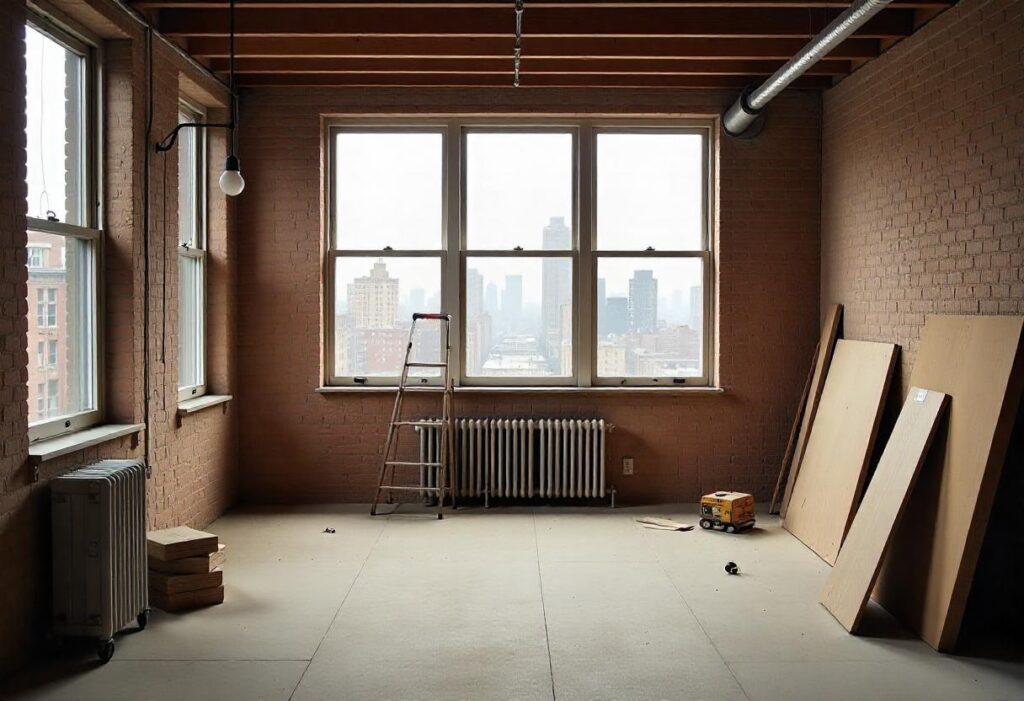
Having explained how much does a complete house renovation cost across different phases, let me now walk you through the renovation costs for each area of your home.
You see, like all strategic homeowners, you’ll prioritize areas that need the most attention and care.
So, if your kitchen needs a makeover but your bathroom is in a fairly good shape, you’ll likely renovate the former and skip the latter.
Talking about the cost of renovating these individual rooms, here’s what you can expect:
1. Kitchen
The most popular of all upgrades, a kitchen remodel is on the pricier side compared to renovation costs of other rooms. So much so that it can account for up to 40 percent of your budget.
You can expect the cost of kitchen renovation on Long Island to be between $10,000 and $50,000.
2. Bathroom
Although small, bathrooms pack a serious punch when it comes to renovation costs. And for Long Island homes, the cost of bath remodels falls between $5,000 and $25,000, depending on the size of your bathroom and the level of upgrades.
3. Living room and bedroom
Did you know that living rooms and bedrooms are usually the most budget-friendly spaces to renovate?
You see, with costs ranging between $1,500 and $10,000 per room, these spaces offer super pocket-friendly renovations and help keep overall home renovation costs down.
That’s awesome, isn’t it?
4. Basement and attic
A basement or attic renovation involves turning them into a livable space and is one of the most valuable home improvements. That’s because it adds both square footage and functionality to your home.
However, it’s also a major investment, with basement remodel costs ranging from $20,000 to upward of $75,000.
How much does a complete house renovation cost for gut vs. non-gut categories?
Home renovations are usually categorized as gut and non-gut. And before I break down the cost of each, it is essential you know what each of these renovations involve.
To begin with, a gut renovation is a complete overhaul where you strip everything down to the studs. Here, you’ll remove walls, redo electrical and plumbing systems, and even relocate key features like kitchens and bathrooms.
On the contrary, a non-gut renovation is one where you do cosmetic upgrades only. This includes painting the walls, upgrading flooring, installing new cabinetry,etc.
Now, here’s how much will renovation cost you for both of these categories:
- A non-gut renovation will cost you in the range of $15 and $60 per square foot. So, for a 2,000 square foot home, you can expect to pay between $30,000 and $120,000.
- A gut renovation starts at $100 per square foot and can climb beyond $200 per square foot. Meaning, you can expect to pay anywhere between $200,000 to upward of $400,000.
What are the factors that decide the total cost of home renovation?
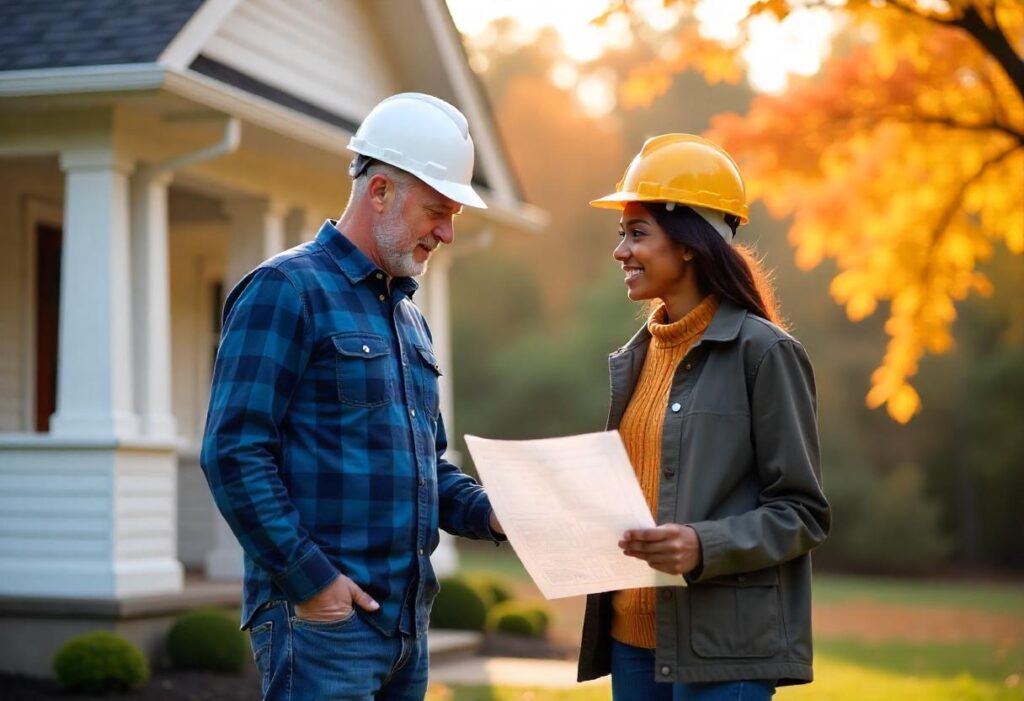
The total cost that you foot for renovating your home varies widely depending on multiple factors. This includes the size and condition of your home, the scope of your project, and the quality of materials used, to name a few.
Not to mention, you’ve to also account for additional costs such as your local labor rates and permit fees.
Overall, here’s a breakdown of what impacts your total renovation cost on Long Island:
1. Extent of renovation
The scope of your project is the biggest factor that decides the renovation cost. Here, the bigger your renovation, the bigger the price tag you’re looking at.
For instance, a minor facelift involving repainting walls and swapping out fixtures will obviously cost significantly less than a full-gut renovation.
Similarly, if you’re planning to change the layout of your home, you should be prepared for added expenses for structural reinforcements, new framing, and architectural plans.
2. Material quality
One of the major budget drivers in any renovation is the quality of materials you choose.
So, if you’re on a tight budget, mid-range materials like engineered wood flooring or quartz countertops can give you a high-end look without breaking the bank.
At the same time, you can expect to pay significantly more for premium finishes like marble countertops, solid wood cabinetry, and imported tile.
Pro tip
I always tell my clients to invest where it matters most. For instance, since kitchens and bathrooms get the most wear and tear, it’s worth spending on durable materials in these areas. On the other hand, you can save on spaces like bedrooms and living rooms by using cost-effective materials.
3. Labor
You’ll agree when I say that Long Island has one of the highest labor costs in the region. And this is because of high costs of living that directly impacts labor rates.
But although skilled labor comes at a premium, they also ensure that your renovation is done safely and up to code.
4. Permits fees
A lot of homeowners overlook the cost of permits, an essential requirement on Long Island and elsewhere in New York.
You see, if a project involves electrical, plumbing, structural modifications, or major expansions, you’ll need to get approval from your local building department.
5. Unforeseen problems
If you’re renovating an older home, you should brace yourself for unexpected issues.
I’ve lost count of how many times homeowners have been caught off guard by things like outdated electrical wiring, old plumbing systems, asbestos, or foundation problems. And this happens more often in older homes compared to newer constructions.
FAQs about Long Island home renovations
How long does a complete house renovation take?
Although the exact timeline varies based on the project’s scope, a full home renovation can take anywhere from several months to over a year.
Do you need to move out during the renovation?
For extensive renovations involving multiple rooms and areas like the kitchen or bathrooms, it makes sense for you to relocate temporarily. This ensures your safety and allows contractors to work more efficiently.
How can you ensure that your renovation stays within budget?
You should communicate regularly with your contractor, have detailed contracts outlining the scope of work, and be diligent when monitoring your expenses.
Are there specific permits required for renovations in Long Island?
Yes, most renovations require permits, especially those involving structural changes and electrical or plumbing work. I suggest you consult with your contractor and local building department to ensure all necessary permits are obtained.
How do you choose the right home improvement contractor on Long Island?
You should always look for licensed and insured contractors with experience in projects similar to yours. And to that end, you can check references, review their portfolio, and ensure they have a good reputation in the Long Island area.
Remodel Your Home from Start to Finish Today!
Get expert renovation services designed to fit your needs and budget on Long Island.

Conclusion
As you can see, there’s no precise answer to how much does a complete house renovation cost on Long Island. So, the price you pay will depend on your individual factors such as size of project, material choice, labor rates, etc.
Nevertheless, I am pretty sure that with the above breakdown of home renovation cost per square foot, you can set a realistic budget for your project.
Got more questions or need to get your home renovated?
You can get in touch with us!
At Creative Design Ceramic Bath & Tile, we are seasoned home renovation experts with an expertise spanning 38+ years. And we’ve got all your home improvement needs covered on a budget.

